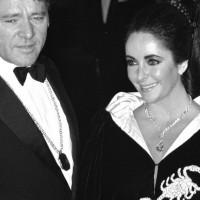-
Christie's Faces Lawsuit Over Handling of Items from Elizabeth Taylor's Estate
03/04/2015
 Last week, the Trustees of the Sothern Trust, an entity tasked with administering the estate of Hollywood legend Elizabeth Taylor, sued auction giant Christie’s, Inc., bringing a series of claims that delve into the important, complex—and sometimes even conflicting—duties owed by an auction house to its consignors and customers.
Last week, the Trustees of the Sothern Trust, an entity tasked with administering the estate of Hollywood legend Elizabeth Taylor, sued auction giant Christie’s, Inc., bringing a series of claims that delve into the important, complex—and sometimes even conflicting—duties owed by an auction house to its consignors and customers.
According to the complaint, filed on February 24 in federal district court in California (see C.D. Cal. Docket No. 15-cv-01318), when Ms. Taylor died in 2011, Christie’s was entrusted with the task of selling some of Ms. Taylor’s spectacular collection of jewelry, clothing, and art; and, in fact, Christie’s successfully auctioned much of the property. The highly publicized sale was accompanied by an exhibition and the offering of a specially produced catalogue and book, the proceeds of which were to benefit the Elizabeth Taylor AIDS Foundation. The Trust’s complaint asserts that Christie’s breached its consignment agreement by, among other things, cancelling the sales of certain items, failing to return certain items or their sale proceeds, and failing to remit payment for the sold catalogues and books.
The most important claims revolve around the “Taj Mahal” diamond necklace, a gift to Ms. Taylor from her fifth husband, actor Richard Burton. The piece was believed to have been a gift from a 17th-century Mughal emperor of India to his wife. At auction, the diamond sold for over $8 million, but the anonymous buyer (whom the Trust calls an “important customer of Christie’s) later allegedly demanded that Christie’s cancel the sale and refund the purchase price on the basis that the diamond was not, in fact, from the Mughal period of Indian history. The Trust asserts that Christie’s never warranted or guaranteed the age of the diamond or its origins beyond a statement in the auction catalogue that it was an Indian diamond. Thus, the Trust claims, the buyer’s gripe did not amount to a breach of any agreement or warranty between Christie’s and its buyer, and Christie’s had no obligation to cancel the sale— yet did so in order to appease a “VIP” customer. This conduct, argues the Trust, was not only a departure from the auction house’s usual practices and policies, but it amounted to a breach of its contractual obligations to the Trust under the consignment agreement, which provides that Christie’s will rescind a sale only if, in Christie’s reasonable judgment, the sale would subject Christie’s or the Trust to liability.
When Christie’s canceled the sale of the diamond, the Trust refused to return the proceeds it had received for the diamond (which is still in the auction house’s possession). At that point, the Trust claims, Christie’s attempted to “strong-arm” the Trust into returning that money by holding hostage the proceeds from the auction of another spectacular piece of jewelry, a Bulgari ring that sold for nearly $3 million. Additionally, the Trust claims that Christie’s has failed to return several other pieces of jewelry and clothing (or their auction proceeds), and canceled the sale of another artwork without explanation. Finally, the Trust alleges that Christie’s has failed to turn over to either the Trust or the Elizabeth Taylor AIDS Foundation the proceeds of the sale of the catalogues and books.
The Trust’s legal claims include: (1) breach of the consignment agreement, on the basis that Christie’s failed to pay contractually required sale proceeds; (2) breach of the implied covenant of good faith and fair dealing, because Christie’s has deprived the Trust of the benefits of the consignment agreement by withholding payment for the Bulgari ring (and other items) to pressure the Trust into returning the proceeds of the diamond sale; (3) breach of the fiduciary duty Christie’s owes to the Trust as its consignor; and (4) conversion, on the basis that the Christie’s was entrusted with several pieces for which it failed to return either the property or the proceeds therefrom. In addition to damages, the Trust seeks, among other things, a declaration that the Trust need not return to Christie’s the proceeds it received from the sale of the Taj Mahal diamond because Christie’s decision to rescind the sale was unreasonable.
This case will be closely watched. First, it’s interesting to note that, while many of the bidders on the Taj Mahal diamond were likely interested in the piece for its size, quality, and Hollywood pedigree, the winning buyer apparently valued its purported Mughal origins, and was disappointed to learn that the piece might not have the history he or she believed. This set of facts serves as a reminder to sellers to pay close attention to what they are “warranting,” and buyers should ensure that their expectations are protected in a legally enforceable way.
Second, this case highlights a situation that rears its head in many art transactions (both auctions and private sales). Auction houses and dealers frequently find themselves bound by two separate contractual relationships. On the one hand, the owner of a consigned work is owed contractual and fiduciary duties by virtue of the consignment arrangement. On the other hand, the buyer of a consigned work is owed contractual duties under the sale contract. Here, the Trust alleges that Christie’s treated an important buyer more generously than the sale contract required, to the detriment of the consignor. Those who act as intermediaries in the art market should seek legal counsel on how to honor their responsibilities to both sides of a transaction; and those who deal with intermediaries must be aware that those intermediaries may be considering not only their interests but also those of a third party.
Art Law Blog
